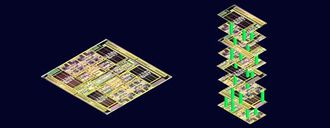 Researchers from Stanford said they have successfully demonstrated the ability to build semiconductors that combine logic and memory chips in a “high rise” configuration.
Researchers from Stanford said they have successfully demonstrated the ability to build semiconductors that combine logic and memory chips in a “high rise” configuration.
The engineers said they have created a new technology to produce transistors, a new type of memory that is ideal for multiple levels and a different way of building the high rise structures.
Subhasish Mitra, a Stanford professor, claimed the design and fabrication techniques are scalable. “With further development this architecture could lead to computing performance that is much, much grater than anything available today,” h said.
Heat generated by silicon chips has been a problem for decades and leakage drains batteries. The team uses carbon nanotubes (CNTs) and solved the big problem of putting enough of these into a small area to make a useful chip.
The engineers grow CNTs on round quartz wafer and created a metal film allowing them to lift a heap of CNTs off the quartz base and put it into a silicon wafer.
The new type of memory uses titanium nitride, hafnium oxide and platinum to create metal-oxide-metal “sandwich” and use electrical switches to make conductive/resistive zeroes and ones. The researches dub this resistive random access memory (RRAM). It can be made at much lower temperatures than silicon memory.





